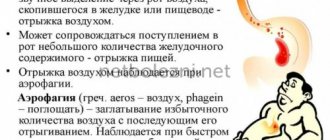Throughout life, the human body, like any other creature, needs to receive vitamins and beneficial microelements. They help our body work fully when there is a shortage of any element, the body malfunctions and the person begins to get sick.
If it happens that you have a feeling of nausea from meat, then this can be considered an alarm bell. After all, it is the main source of protein, which is vital for the body. Let's look at the reasons why an aversion to meat may occur.
Why did you develop an aversion to meat?
If you notice that you have nausea or vomiting at the sight or smell of meat, you should pay attention to this. This can be a symptom of both serious diseases (cancer) and not very dangerous diseases (stress, just lack of appetite). This may also be a sign of the birth of a new life (pregnancy).
So, why does aversion to meat occur? The reasons may be the following:
- At home, only one probable cause can be excluded, and it only applies to females: pregnancy. If the test shows two lines, then there is no need to panic too much. But you will still need to consult a therapist, since a complete refusal of meat products in this state can harm the unborn child. Here even the swing of a meatball can be annoying, not just its appearance.
- If you have an aversion to meat, then know that this may also be due to other hormonal changes, such as: adolescence, menopause; postpartum period. The state of aversion to meat goes away as soon as the hormones return to normal.
- The presence of parasites in the body. For example, worms.
- The worst thing is the beginning of development or already progressing cancer. With this disease, the functioning of many organs is disrupted, and appetite also disappears. But a particularly pronounced symptom is an aversion to meat.
- Disease of the liver and other organs of the digestive tract. Meat products are difficult to digest, and their consumption causes heartburn, abdominal pain, heaviness in the stomach and even nausea with vomiting in such people. Therefore, people often simply refuse heavy foods themselves (meat falls into this category).
- Poisoning or accumulation of excess toxins in the body. At this time there is a heavy load on the liver. This entails the body’s rejection of meat.
- Medicines. Some affect taste changes and cause disruption in the functioning of the gastrointestinal tract.
- Wrong diet or vegetarianism. If the menu is compiled incorrectly, then over time the body may weaken or digestion problems will begin. This in turn will entail a refusal of meat products.
- Oversaturation of the body with meat. This happens to people who don’t spend a day without it and are ready to consume it in large quantities. As a result, the body itself will refuse heavy food, causing nausea at the sight of meat.
- A side effect from an illness. For example, hepatitis greatly damages the liver. As a result, the stomach will no longer be able to properly digest heavy food, and the body itself begins to reject meat products.
- Alcohol and smoking can also cause nausea on meat products. Because they clog the body with toxins and overload the liver. It subsequently provokes a refusal of meat.
- A person on a subconscious level considers meat an unnecessary and harmful product. These are people who believe that meat makes you old, or you can’t eat meat because to do this, a person needs to kill a cow, chicken or ram. Mostly they are vegetarians.
- Stressful condition. It could just be depression; there is refusal and aversion not only to meat food. Or perhaps the person watched a film where there was a lot of blood or the carcass of a killed animal was cut up. Or visited a similar factory. If a person is very impressionable, then his aversion to meat may not go away soon.
- Weakness of the body. In this case, the digestive system itself refuses to take meat products. This happens because meat is a rather heavy food, and the body simply does not have enough energy to digest it. Therefore, at this time a person greedily begins to eat buns and chocolate. Carbohydrates are absorbed faster and replenish energy losses. The main thing here is to stop the abuse of carbohydrate foods in time. Otherwise, excess weight will be ensured.
Manifestation of signs
Few people have problems with nutrition: food in the world is accessible and varied. Overeating, like lack of food, is a deviation from the norm. Violence against the body provokes internal organs and systems to react violently to excess or insufficient consumption of food products.
The pathology is manifested by a malfunction in the endocrine system and a disturbed psychological state. The appearance of an allergic reaction to a food irritant stimulates nerve endings. The person feels nauseous, produces an increased amount of saliva, becomes dizzy and may vomit.
What makes you sick
When eating food, abdominal discomfort occurs, which is accompanied by nausea with or without vomiting. Excessive consumption of food, alcoholic beverages, adherence to bad habits (smoking) or nervous shock lead to indigestion, causing aversion to certain foods. Loss of appetite with a feeling of aversion to food occurs as a result of:
- Hormonal changes in the body. The period of menopause, breastfeeding, and pregnancy change the usual functioning of the endocrine glands.
- Infestation with worms. Worm infestations are accompanied by rapid weight loss.
- Formation of a malignant tumor.
- Digestive disorders. Disease of the stomach, liver, or other organ of the gastrointestinal tract leads to improper functioning.
- Food intoxication. Nausea, weakness, and discomfort behind the diaphragm are caused by poisoning from expired products or alcohol.
- Taking medications. Sedatives, histamines, and antimicrobial medications have side effects such as nausea, headache and lack of appetite.
Nauseating odors
The girl’s nausea from meat, raw fish, and spices prompts others to think about a possible pregnancy. The first trimester drives a pregnant woman’s body into stressful conditions. A female representative feels sick and can vomit from the sight and smell of food. Even favorite dishes before the period of bearing a child become a source of unpleasant memories and a gag reflex. The pungent aroma of the hated component of food immediately draws the girl to the restroom.
An unbalanced diet and systematic violation of the diet provoke indigestion. Food ceases to be fully processed and absorbed in the intestines. To calm the stomach, doctors advise drinking water. If nausea does not go away within two hours, you should consult a doctor or call an ambulance.
Why is it a problem during pregnancy?
Aversion to meat is a symptom of what disease? With different diseases, the feeling of disgust can be expressed in different ways. And sometimes these small differences can be used to more accurately determine what disease is lurking in the body. And using these signs, you can quickly find the causes of the disease.
It is possible to develop an aversion to meat during pregnancy. During this period, there is an aversion to many dishes and even to the most favorite ones. A pregnant woman can vomit not only from the sight of raw meat, but also from the smell of fried chicken. This usually manifests itself as vomiting. But this period does not last long. And it is caused by the fact that the body itself chooses which nutrients it needs most now. There are no additional symptoms (for example, abdominal pain). If there are other signs and the dislike for meat lasts more than a week, then it is better to consult a therapist.
Anorexia-cachexia syndrome
Until the beginning of the 21st century, it was simply called cachexia, which means bad condition in Greek. Cachexia is not just weight loss, as is commonly believed. This is a disease state characterized by loss of muscle mass, while loss of fatty tissue is optional. Muscle tissue is lost due to a combination of eating disorders - anorexia and metabolic disorders.
Anorexia-cachexia syndrome in cancer patients (ACCS) is composed of four symptoms: [1,2,3]
- reduction in skeletal muscle mass;
- anorexia – pathological lack of appetite, even to the point of disgust;
- rapid saturation with small amounts of food;
- fatigue.
This syndrome develops in the last stage of stomach and pancreatic cancer, in more than half of patients with lung, colon and prostate cancer, and in every third or fourth patient with breast cancer. In the terminal stage of the cancer process, when the progression of the tumor can no longer be stopped, anorexia-cachexia syndrome can develop with any malignant tumor.
Prevalence of anorexia-cachexia syndrome.
Anorexia-cachexia syndrome is triggered by a malignant tumor; through its vital activity it captures more substances and requires more energy than it supplies with nutrients. In addition to this, the tumor significantly reduces appetite and disrupts the digestion process itself. In 25% of cancer patients, SACOB is the cause of death. [2.5]
Stress and meat refusal
In stressful situations or normal refusal of meat, other than nausea, no symptoms appear. And it can go away on its own as soon as a person appreciates the benefits of meat products or the stress passes.
If the disgust lasts more than three days, then it is better to consult a therapist. It is worth going to the pediatrician if your child has an aversion to meat, and it appeared suddenly, and occurs with additional symptoms.
Treatment of botulism at JSC "Medicine" (clinic of academician Roitberg)
Treatment of the disease includes the following:
- gastric lavage using a special probe to remove remnants of contaminated food;
- intestinal dialysis using a special solution;
- administration of antitoxic serum in accordance with the type of bacteria detected (A, C or E);
- administration of drugs for infusion therapy to accelerate detoxification, restore water and electrolyte balance, and eliminate protein disturbances;
- introduction of antibacterial drugs;
- measures to eliminate hypoxia and its consequences;
- treatment of complications of botulism.
Depending on the severity of the poisoning and overall health, treatment for botulism takes from several days to a month. However, with timely medical intervention and compliance with clinical recommendations, botulism is sooner or later completely cured, and the activity of the nervous system is restored without the slightest consequences for its functioning.
What are the dangers of not eating meat?
People who refuse to eat meat products at first note lightness and even an increase in energy (this happens due to the fact that energy is not wasted on digesting meat, and a lot of it is required, but the resulting energy lasts for a long time). But over time, a loss of strength and exhaustion of the body occurs.
A lack of proteins begins; they are especially important during pregnancy, as well as the growth of the child. The amount of iron in the blood also decreases. This can cause severe illness, fatigue and decreased immunity. Brain performance will also decrease.
The lack of meat will also affect the condition of the bones. They will become brittle and brittle. A fracture can occur even with light blows. The spine will not form correctly, it may become curvature, and clubfoot may also develop.
It will also affect the condition of the skin, acne and increased oiliness will appear. Cholesterol levels will decrease. While this is beneficial for an adult (although not for everyone), it is harmful to a child’s body. And in the absence of cholesterol, the child will not develop properly.
Lack of meat can cause difficulty in conceiving and can lead to infertility. All the vitamins and minerals found in meat are also found in other foods. They can temporarily replace it, but not completely.
Types of disease
Depending on the etiology, botulism can be:
- foodborne - this is the most common type of disease resulting from eating foods contaminated with Clostridium botulinum;
- wound – developing due to contact of the patient’s wound surface with a surface on which bacteria are present;
- children's - developing only in infants in the first six months of life due to parents' violation of hygienic recommendations for child care;
- respiratory - in this case, the pathogen enters the body through the respiratory system in the form of spores sprayed in large quantities into the air (for example, when using bacteriological weapons).
All of the listed varieties, except food ones, are extremely rare. Transmission of botulism from an infected person to a healthy person is impossible.
The benefits of not eating meat
Although there are advantages to the absence of meat products in the diet:
- Excessive amounts of meat products can lead to heart and vascular diseases.
- Meat can cause pathologies in the kidneys and liver.
- Cause diseases of the gastrointestinal tract, including cancer.
- Meat is not always properly processed and stored. And often, to give it a marketable appearance, it is exposed to various chemicals.
- Animals are constantly vaccinated against diseases; the medicine can settle on all its organs and tissues. Which can trigger the onset of serious illnesses.
- Animals are fed special supplements to increase weight gain. Which is also harmful to humans.
But if the livestock is raised on a proven farm or independently, then such meat is recommended for consumption. You just need to observe the measure, proper storage and preparation.
Causes of nausea
Meat eaters abuse this product, consuming it in uncontrolled quantities. Nutritionists warn about the dangers of excess meat in the diet. A case of excessive consumption entails:
- Cardiovascular diseases.
- Pathologies of the liver and kidneys.
- Cancer processes of the gastrointestinal tract.
- Atherosclerosis and others.
After meat processed with modern technologies, nausea appears for the following reasons:
- Producers feed animals with nutrition uncharacteristic for the species.
- Antibiotics, pesticides, hormones, and steroids accumulate in muscle fibers.
- The dose of chemicals when processing carcasses was greatly exceeded.
- Violation of storage technology, extending the shelf life of semi-finished products using nitrates and nitrites.
What do doctors advise?
If you have an aversion to meat, you can temporarily exclude it from your diet and replace it with analogues containing protein and other vitamins. This is especially true for pregnant women. But we must remember that plant protein is significantly different from animal protein.
If a person independently refuses to eat meat due to some beliefs, then initially you need to pay attention to age. For children and adolescents, such refusal is dangerous. It is advisable to become involved in vegetarianism after 25-30 years, but not during pregnancy or illness.
How are patients with botulism treated?
At home, first aid for botulism consists of transporting the patient to a medical facility as soon as possible. The faster this is done, the higher the chances of a successful recovery. At the same time, the patient’s stomach should be rinsed with an aqueous solution of baking soda (20 g per liter of water), given a cleansing soda enema and given enterosorbent.
The above actions will slow down the action of the toxin and help partially remove it from the body. However, they do not cancel calling an ambulance and transporting the patient to a medical facility, since with severe intoxication, the patient can very quickly develop paralysis of the respiratory tract and asphyxia, which leads to death.
Products
Products that partially replace meat:
- peas and legumes;
- mushrooms rich in protein (for example, russula does not contain many useful substances);
- various seeds (sunflower, sesame);
- various cereals;
- nuts of different types;
- fermented milk products;
- If a person is not a vegetarian, then you need to eat eggs and fish.
The main thing here is to follow the rules of use. Otherwise, there may be an overabundance of some important elements and a lack of others. If you have an intolerance to certain foods or a person has severe allergies, then you need to consult with the right specialist.
Symptoms of cachexia
The most common symptoms of cachexia include:
- Loss of body weight.
- Anorexia (decreased or lack of appetite).
- Quick satiation with food.
- Constant fatigue.
At the pre-cachexia stage, body weight loss of up to 5% is possible within six months. There may also be anorexia, a systemic inflammatory response, and possible metabolic disturbances.
At the stage of cachexia, there may be a loss of body weight of more than 5% within six months, a continued loss of more than 2% of body weight with a BMI of less than 20 kg/m2, a possible decrease in skeletal muscle, anorexia, a systemic inflammatory response, and a decrease in the amount of food consumed.
And at the stage of refractory cachexia with pronounced catabolism, there is no effect from the therapy. The symptoms are most pronounced. The life expectancy of such patients, as a rule, does not exceed several months. [1,2,3]
Adviсe
If a person is irritated by the smell of meat, then a decoction of ginger or chamomile can be used to treat it. And also entrust the preparation of such dishes to another person (mother, husband, sister, etc.) and ventilate the apartment more often, especially the kitchen.
To avoid disgust, you need to carefully approach the purchase of meat and check its freshness. Prepare dishes where the flavor of the meat will not be very pronounced. If refusal is not a personal decision, then you need to look for the reason, and preferably not on your own. And start treatment.
If the lack of appetite for meat is accompanied by abdominal pain, fever, vomiting, sudden weight loss and increased sweating, then this is a reason to sound the alarm and go to the hospital.
How the body spends itself on energy
In a healthy body, a balance is maintained between calories received from food and energy expenditure; weight gain is more natural than weight loss. In any case, gaining weight is much easier than losing weight—considerable efforts are made to achieve this. With all the complexity of the processes occurring in the body, the entire system is tritely configured to create reserves in case of unexpected starvation. Nature has taught the body to store more substances than it spends.
When the supply of nutrients is limited due to diet or illness, energy expenditure to support life processes is maintained. And the first thing that begins is the utilization of reserves of subcutaneous fat, from which everything necessary is drawn. When subcutaneous fat runs out, it is the turn of the internal abdominal fat, then energy is drawn from the organs, where there are also fat cells. And only after the breakdown of fats into energy needs, muscle tissue proteins are used. And when “eating” muscles, the order is also included: skeletal muscles, then proteins from organs. And the more important the organ, the later it is “disassembled” into amino acids, which become a source of energy. [4]
What to do if you are poisoned by chicken
It is much easier to prevent a disease than to treat it. But if such a situation suddenly happens, you need to act immediately.
- In case of chicken poisoning, treatment should be carried out by doctors in the infectious diseases department. Therefore, you need to go to the clinic for specialized help or to the hospital, call an ambulance. This is for severe poisoning.
- What can be done before the doctors arrive? You can perform gastric lavage with warm water at room temperature. If there is activated carbon, you need to give an adult at least 8 tablets at a time.
- What to do in case of chicken poisoning if the symptoms are not pronounced and the person feels moderately unwell? It is necessary to completely stop the intake of chicken meat into the body and begin symptomatic treatment. To do this, use solutions to replenish fluid loss in the body if there has been vomiting and diarrhea. Antibiotics, drugs that protect the gastric mucosa from inflammation and substances that normalize intestinal microflora are prescribed.
- If an allergic reaction develops, a strict diet and antihistamines (anti-allergic) drugs are prescribed until the symptoms disappear.
Treatment of cachexia
Even when the process of exhaustion has gone very far, and it is no longer possible to prevent the ongoing melting of skeletal muscles, it is necessary not only to maintain life in a person - it is necessary to improve his condition. It is imperative to reduce the manifestations of symptoms that affect the decrease in nutrient intake: reduce nausea, treat damage to the mucous membranes. Try to increase your appetite and relieve pain, because when you are in pain you don’t think about food. And, of course, establish nutrition with special mixtures and protein solutions. [2.7]
There are more treatment options than patients and even therapists realize. It is impossible to cure cachexia, but giving a person the opportunity to live is possible and necessary. And this is what Euroonco doctors do.
Book a consultation 24 hours a day
+7+7+78
Bibliography:
- Kononenko I.B., Larionova V.B., Manzyuk L.V. — Clinical recommendations for the correction of anorexia-cachexia syndrome in cancer patients. — Moscow 2014
- Snegovoy A.V., Kononenko I.B., Larionova V.B. — Practical recommendations for the correction of anorexia-cachexia syndrome in cancer patients. — — DOI: 10.18027/2224-5057-2016-4s2-469-475.
- Sytov A.V., Zuzov S.A., Leiderman I.N., Khoteev A.Zh. - practical recommendations for the correction of anorexia-cachexia syndrome in cancer patients. DOI: 10.18027/2224-5057-2020-10-3s2-44.
- Klochkova I.S., Astafieva L.I., Kadashev B.A., Sidneva Yu.G., Kalinin P.L. Pathogenetic aspects of cachexia syndrome // Obesity and metabolism. – 2022. – T. 17. – No. 1. – pp. 33-40. doi: https://doi.org/10.14341/omet10173.
- Michael J. Tisdale. Mechanisms of Cancer Cachexia. — Physiol Rev 89: 381–410, 2009; doi:10.1152/physrev.00016.2008.
- Kenneth C. H. Fearon, David J. Glass. – Cancer Cachexia: Mediators, Signaling, and Metabolic Pathways. Cell Metabolism 16, August 8, 2012. https://dx.doi.org/10.1016/j.cmet.2012.06.011
- Ada M. Lindsey. Cancer cachexia: Effects of the disease and its treatment. Seminars in Oncology Nursing, Volume 2, Issue 1, February 1986, Pages 19-29. Seminars in Oncology Nursing. https://doi.org/10.1016/0749-2081(86)90005-7.
- J. Arends, F. Strasser. — Cancer cachexia in adult patients: ESMO Clinical Practice Guidelines. Volume 6 -Issue 3 - 2022. https://doi.org/10.1016/j.esmoop.2021.100092.
How to help yourself
You cannot completely let go of this problem. It is still necessary to take measures to improve your health. The incoming food must be balanced and complete. Most people don't consider this a problem.
Indeed, giving up meat products on a subconscious level does not require medical treatment. It is quite natural when the body is oversaturated with some foods and wants to get others.
It is not recommended to completely limit yourself from protein foods. Besides meat, there are other foods that can replace it.
In this case, you just need to reconsider your diet and diversify it with various foods containing both protein and carbohydrates.
There are many options, you just need to familiarize yourself with them. You can switch to vegetable protein.
If a pregnant woman feels sick after eating meat products, you can replace it with others:
This food has plant protein and will not allow the body to lack iron or other microelements.
Instead of meat, you can eat eggs, cottage cheese, fish, and cheese. For those who watch their figure, this is good news. Cheese and cottage cheese have lower fat content. Therefore, when replacing, it is better to focus on them.
Degrees of cachexia
Cachexia not only leads to loss of strength, it changes the response to anticancer treatment and impairs tolerability, which has a fatal effect on life expectancy.
With a loss of no more than 5% of body weight over six months, accompanied by a pathological aversion to food and signs of inflammation, precachexia is assumed. A systemic inflammatory reaction can be considered when the temperature is above 38 °C or below 36 °C, tachycardia from 90 beats, rapid breathing, white blood cells above 12 thousand or below 4 thousand. Only at the stage of precachexia can treatment stop the loss of muscle mass, which will change the immediate fate of the patient.
If there is a loss of more than 5% of weight with all the indicated signs, they speak of cachexia itself. The same condition occurs in a patient with initially low weight with a loss of only 2% of body weight. Further decline is not just a decrease, but a form of exhaustion with the inability to get out of bed or, due to weakness, spend more than half a day in it, unresponsive use of antitumor therapy is already refractory cachexia. [3,5,6]








